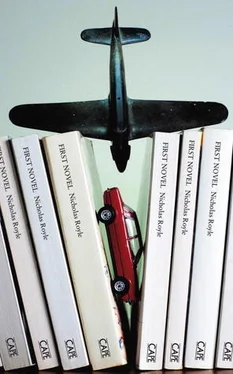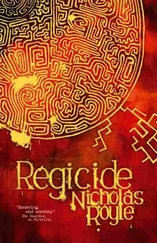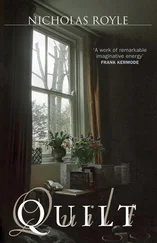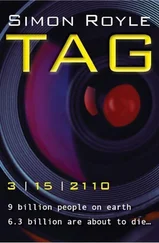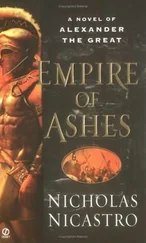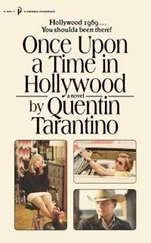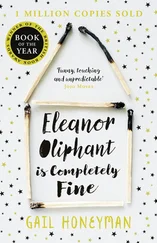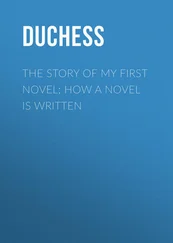He holds his hand out.
I hesitate momentarily, but then drop it into his palm.
He holds it up close and studies it. He pulls a face that says he doesn’t know either.
‘Some years ago,’ he says, ‘there was a plane crash in South America.’
‘In the Andes?’ I ask. ‘The Uruguayan rugby team? The Alive story.’
‘No. Much later.’
‘That story had a profound effect on me as a child,’ I say.
‘On a lot of people, I’m sure, but this was twenty years later, maybe more. A passenger aircraft was flying over a mountain range — maybe it was the Andes, maybe not — and it went off radar. Just disappeared. They sent out military jets to search for it and everything. Nothing. Nada. Ksssh-huh-huh .’ He sips at his pint before continuing. ‘Then they discovered the wreckage, I don’t know, a year later or summat.’ He looks at me. ‘On the wrong side of the mountain.’
‘What do you mean?’
‘Exactly what I said. They knew where the plane was when it left the radar. They knew what direction it was flying in. They knew where it must have experienced what they call an “uncontrolled collision with terrain”. But when they performed a fly-past, there was nothing to see. And then, a year later, they discovered some wreckage, on the wrong side of the mountain.’
‘The plane must have travelled some distance after leaving the radar,’ I say. ‘Gone around the mountain, changed direction.’
‘Then why, shortly afterwards, did they finally find some wreckage on the right side of the mountain as well?’
‘What are you saying?’
‘I’m not saying owt. All I’m saying is what I read in the paper. After they spotted the wreckage on the wrong side of the mountain they sent out search teams, which found debris from the plane on both sides of the mountain.’
‘Near the summit, perhaps?’ I try. ‘It hit the mountain near the summit and part of the plane flipped over the top.’
‘Nice idea, but no. Five hundred feet from the top and no easy way round either.’
He lifts his pint. A trickle of bitter overflows at the corner of his mouth and drips on to his patterned shirt. I am reminded of Mr Fox on my mother’s lap.
‘Seen Carol lately?’ he asks.
‘No, I haven’t seen Carol. Or AJ.’
‘You know what they say about Carol?’
‘What? What did you say?’ I look at the grin that cuts open the lower half of his face like a wound.
‘You know what they say?’
‘No.’ Not ‘No?’, but ‘No.’ I didn’t want to know.
‘Cars,’ he says, regardless.
‘What do you mean?’
No one appears to be listening in. Group conversations underway. Pub hubbub.
‘Apparently, Carol likes to have sex in cars.’ Lewis looks at me intently, as if it is an important piece of information, something I have been waiting for.
‘With AJ?’ I ask in spite of myself.
Lewis shrugs. ‘With or without AJ, is what I hear.’
‘Really?’ I mean it to sound as if I am indifferent, but the way it comes out, it’s more like I don’t believe him.
‘See for yourself.’
I frown at him.
He taps the side of his nose like a cartoon lech.
‘Video,’ he stage-whispers. ‘DVD. Apparently.’
I curl my lip.
‘I mean, there’s definitely some footage. It’s just hard to say who it is.’
He raises his half-empty pint glass and seems to want me to do the same.
‘Here’s to Carol,’ he says, ‘whoever it is on the DVD.’
I drain my glass, then ask him, ‘When was that plane crash? When did you read about it in the paper?’
‘I can’t remember,’ he says. ‘I’ve tried going online and can’t find owt about it. I mean, it’s not a lot to go on. Plane — crash — mountain. You get a gazillion hits.’
‘They’re not called hits.’
‘Whatever.’
‘What about adding “wrong side”?’
‘Nothing.’
Lewis gets to his feet and points across the bar.
‘Piss,’ he says. ‘And when I get back I want to ask you about how you write. Your routine, discipline, all that.’
As Lewis makes his way to the Gents, I sense Kelvin’s eyes on me. I turn to look at him. His expression is unreadable.
‘I need to get this home,’ I say to Kelvin, showing him my bottle of milk, and while an argument about different interpretations of the offside rule is occupying the other members of the group, I quietly leave the pub.
The Writers’ Rooms series kicks off with Beryl Bainbridge. What makes them pick her rather than Michael Frayn, I wonder, who appears in week two? Strangely, on the Guardian website, the order is reversed. Beryl Bainbridge has books on her shelves, but they are some distance away from the lens, and the glare of sunlight makes it difficult to read any titles or authors’ names. Of more interest to the photographer, Eamonn McCabe, are the pistol and old typewriter on the table in the foreground.
Michael Frayn has a high-backed chair with a neck support of the kind that is good for bad backs. There are a number of similar chairs. Sarah Waters, David Lodge, Esther Freud, Simon Gray and Al Alvarez all have similar chairs. Geoff Dyer, Alain de Botton, Siri Hustvedt and Francesca Simon all have exactly the same chair as each other: it has a wide curved back and sturdy arm rests and several controlling levers. A surprising number of writers — David Hare, J. G. Ballard, Margaret Drabble, Colm Toíbín, Louis de Bernières, Martin Amis and many more — get by without castors. I imagine their chair legs scraping and dragging awkwardly on rugs, carpet, sisal matting and varnished floorboards as they sit down at their desks. William Boyd accessorises a rattan chair with some cushions, but it can’t be good for his back. Most of his books are at too tight an angle to the camera for the spines to be easily read. Those that aren’t are piled with the spines facing away. Any one of those could be of interest, but how would you know?
The only books visible in Ronan Bennett’s room are behind glass, obscured by reflection, but pride of place is given to a vast collection of chess pieces also in a glass case. Penelope Lively’s books are too far away in an alcove and all the stacks in the foreground reveal is a taste for Seamus Heaney. In the attic room of his house in Dublin, Seamus Heaney writes under the glass-eyed gaze of a stuffed yellow bittern in a bell jar. A short-haired cat tiptoes across Joshua Ferris’ desk, a tabby occupies the corner of Julie Myerson’s and a dog called Watson squats on Nicola Barker’s chair. Barker has some orange-spined books, but they’re easily identifiable as A-format Penguins.
Eric Hobsbawm, Elizabeth Jane Howard and Al Alvarez all have some larger-format orange spines with black writing, but they’re too far away to make out. The photographer’s job is to get as wide a view of the room as possible, not to allow you to read the spines of the books on view, which is what I am trying to do. Anyway, what could ever have motivated Eric Hobsbawm, Elizabeth Jane Howard or Al Alvarez to pick up a copy of a novel published in a limited edition by a tiny independent imprint in the early 90s?
A wooden artist’s figure with articulated joints strikes a ballet pose on John Banville’s desk, close to a neat pile of three Moleskine notebooks. His bookshelves are full of reference volumes and books on Bill Brandt and Koudelka. Siri Hustvedt keeps Gray’s Anatomy, Principles of Neural Science and The Norton Anthology of Poetry to the left of her desk. Most of her other books are just slightly too far away to read the titles or authors’ names. There is one orange and black spine that looks promising, but it’s impossible to say. Though why would a copy have crossed the Atlantic? It was barely distributed in the UK, never mind the US.
Читать дальше
